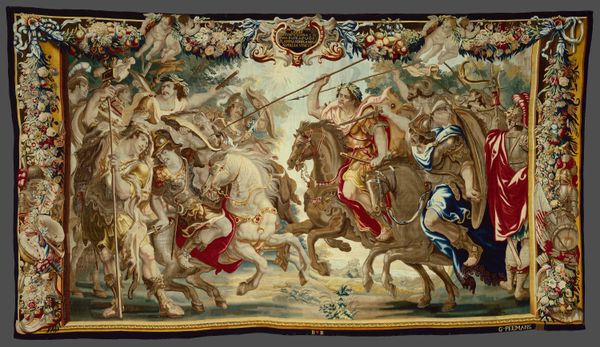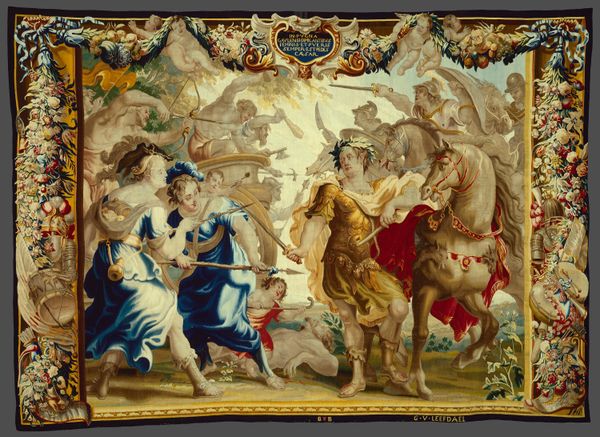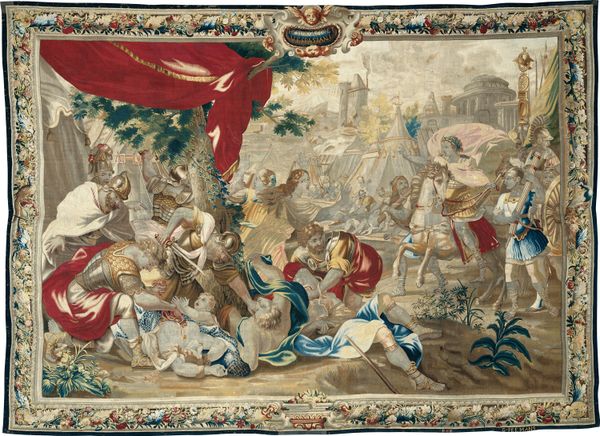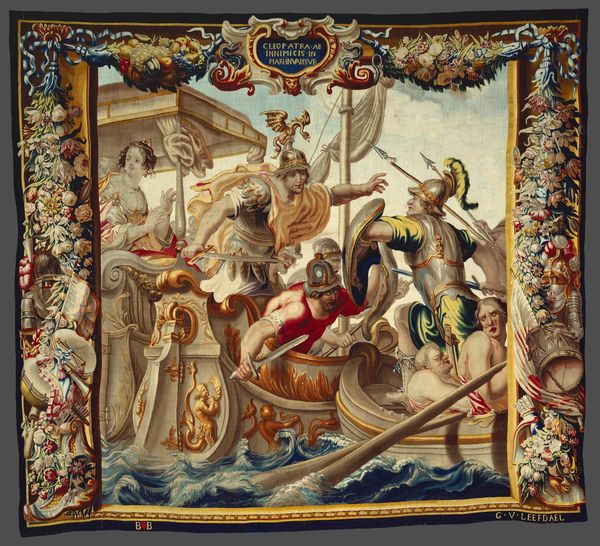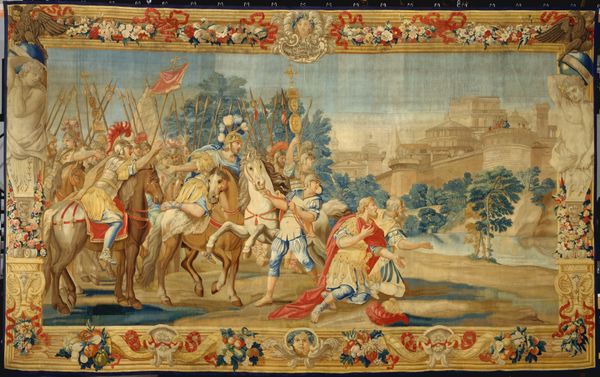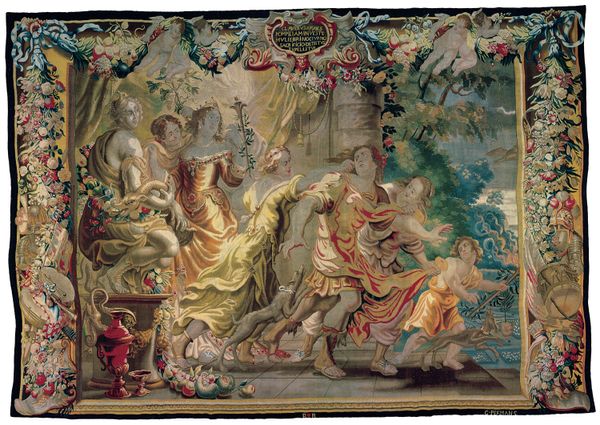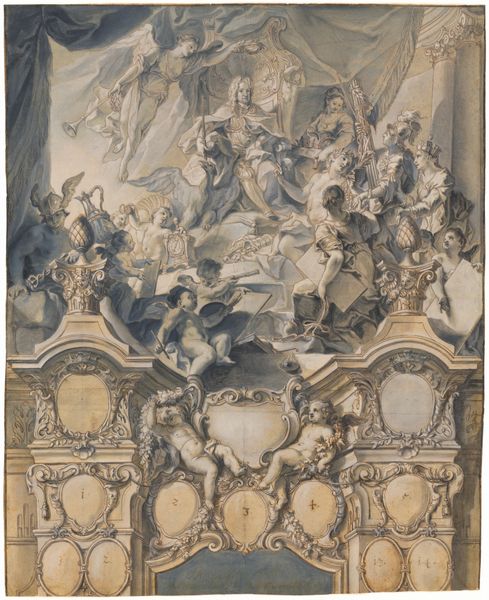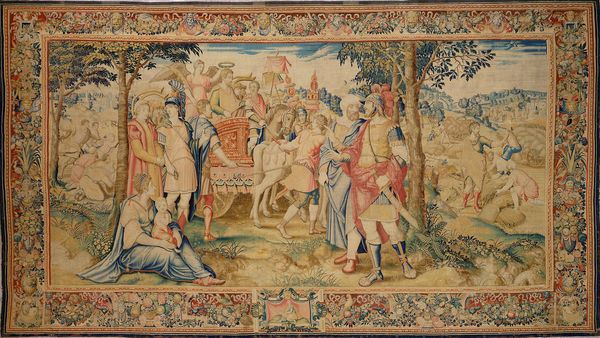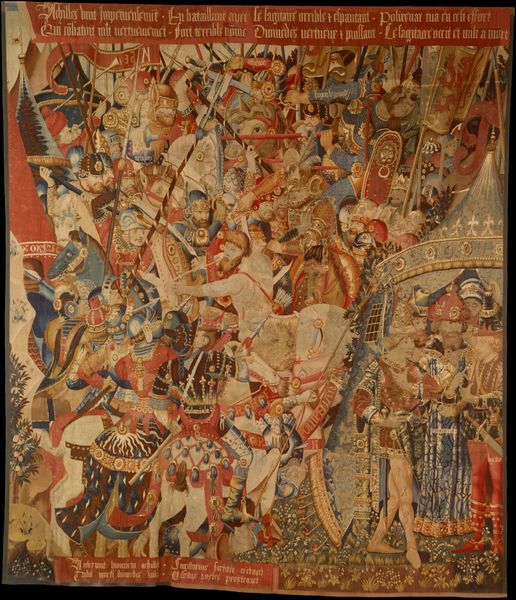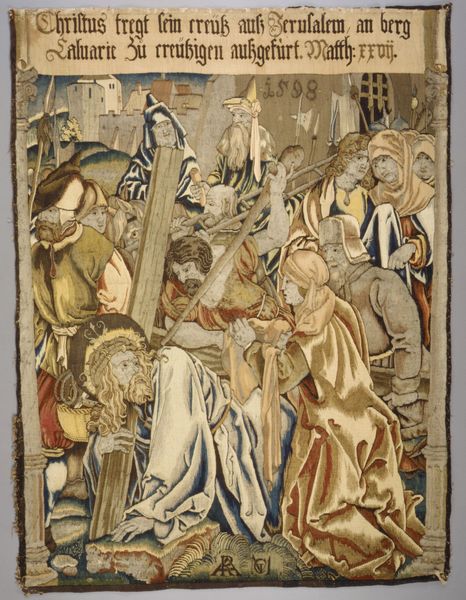
Discovery of the Plot to Kill Caesar and Cleopatra from The Story of Caesar and Cleopatra c. 1680
0:00
0:00
weaving, textile
#
narrative-art
#
baroque
#
weaving
#
textile
#
figuration
#
history-painting
Dimensions: 525.5 × 370.6 cm (206 7/8 × 145 7/8 in.)
Copyright: Public Domain
Curator: This impressive tapestry, dating from around 1680, is entitled "Discovery of the Plot to Kill Caesar and Cleopatra from The Story of Caesar and Cleopatra" and is attributed to Geraert Peemans. I'm always struck by the way such historical scenes were immortalized. Editor: Wow, the texture is intense. It’s remarkable to see that much detail achieved through weaving. It feels surprisingly chaotic, despite the formal subject matter. Curator: Yes, chaos certainly underpins the narrative, doesn't it? It’s interesting how tapestries like this were so much more than decoration. They were literally woven with political intent, with notions of power, status, and perhaps even warnings. Think of how gender roles factor into this conspiracy. What roles do women play within the court and are their loyalties subverted by patriarchal narratives? Editor: I agree. Thinking materially, though, each thread contributes to this complex whole. I wonder about the hands that created it, and the economic structures that facilitated its production. Who decided the visual messaging? What dyers produced such rich hues, and at what human and environmental cost? Curator: Those material and social components are very interesting. But seeing the narrative play out raises the more pressing idea: What did this artwork mean to a society grappling with its own forms of empire and intrigue? It's impossible to divorce ourselves from understanding this representation within the historical context of evolving power structures and social inequalities. Editor: It's a fascinating thought. Though looking closely at the weave again makes me appreciate the physical labor involved in its creation, and its original use as something of functional luxury. Curator: Precisely! To connect it back, isn’t the interplay between usefulness and representation telling? It challenges assumptions of what a craft is and what is acceptable in fine art. It encourages discussion on the role of visual narrative in reflecting and sometimes shaping societal values. Editor: Agreed. When we give such textiles greater value, we question historical judgements based around aesthetic taste and acknowledge the cultural legacy interwoven into their design and materiality. Curator: Indeed, an intricate weave, literally and metaphorically! Editor: Definitely left me considering textiles more thoroughly today.
Comments
No comments
Be the first to comment and join the conversation on the ultimate creative platform.
